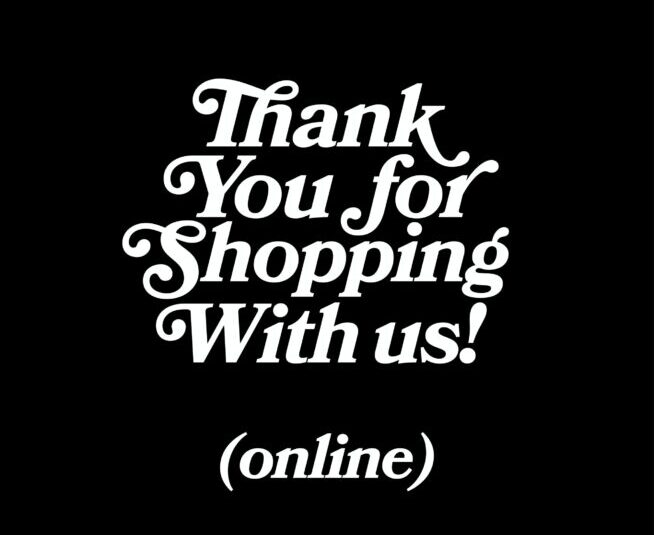
Could Covid-19 Turn Out To Be a Win for the Grocery Industry?
In Shakespeare’s Henry VI, written in 1591, Henry’s son says, “Ill blows the wind that profits nobody”. This is generally accepted as the origin of the saying, “It’s an ill wind that blows nobody any good.”
Covid-19 was an ill wind for almost everybody, and supermarkets had their fair share of troubles surviving the pandemic. Supply chain problems led to huge out-of-stocks, with empty shelves making mainstream US grocery stores look like Soviet-era shops. There were also struggles to manage unpredictable employee illnesses and absences. And on top of that, shifting customer behaviors, as online shopping ramped up dramatically—with some prognosticators saying it fast-forwarded online grocery shopping to levels that weren’t expected for another five years.
Add expenses for masks, plastic barriers at checkout, and hand sanitizers, and it is easy to think that Covid-19 was bad news for the supermarket industry.
Looked at today, though, a case can be made that the pandemic was an ill wind that was, in the long run, beneficial for the grocery industry. Let’s look at a couple of examples:
ONLINE SHOPPING
Online grocery shopping grew dramatically during Covid-19. Although ecommerce sales in grocery have slowly declined post-pandemic, most of the huge increases are here to stay. Order frequency remains 20% above pre-pandemic levels. In fact, eGrocery sales in April 2023 were up 0.9% from April 2022, to $8.2 billion.
The grocery industry has struggled to find ways to make online shoppers profitable, but the “order online, pick up in store” model has become more popular and is definitely lower cost than delivery. Repeat intent (the likelihood that a customer will use the same service within the next thirty days) continues to drop, and the leveling off of online grocery shopping may not be complete just yet. The good news is that the repeat intent rate for the more profitable pickup orders has declined far less than the rate for delivery. Inflationary pressures may be contributing to this trend too, as customers increasingly cite cost considerations (avoiding delivery fees) as being more important than convenience.
Retailers continue to try different models to maximize efficiency in fulfilling online orders. Walmart has become a leader in trying innovative ways to offer shoppers a satisfying experience while still making the process profitable. After trying large fulfillment centers, they appear to be souring on that approach. This year, they have laid off workers in fulfillment centers in Texas, Pennsylvania, Florida, New Jersey and California, eliminating at least 3,000 jobs. And that is on top of 1,500 workers at their Atlanta facility laid off late last year. Reflecting just how quickly ecommerce fulfillment is changing, as recently as a year ago Walmart was promoting these fulfillment centers as the future, able to provide 75% of the US Population with one -to-two day shipping.
Instead, Walmart is turning to store-based fulfillment. In May, Walmart announced the start of store-based fulfillment in Bentonville, following a test at their store in Salem, New Hampshire, which has been ongoing since 2019. The plan is to roll out this new concept to dozens of other stores in the near term. These centers increase the number of orders a store can handle daily while freeing up store employees to do other tasks. How is that possible? One word. Robots.
Walmart acquired robotics automation company Alert Innovation last year after it designed the Salem facility. The automated bots are used to gather items for an order, which are then delivered to an order assembly area. Order fulfillment is not only faster, it is more accurate. At the same time, Walmart is closing its ecommerce only stores. Robotics are also being used in fulfillment centers to improve profitability and efficiency. By the end of 2023, about one-third of stores will be served by distribution centers using robotics. Walmart estimates that the use of robots will reduce the cost of moving goods by 20%.
Walmart is not the only company expanding its use of robotics to improve the profitability of its ecommerce operations. Kroger partnered with Ocado last year to build distribution hubs using cutting-edge technology to deliver online orders to their customers. In March, they opened their latest center in Aurora, Colorado, to fulfill deliveries to their King Sooper customers. The deliveries are in temperature-controlled vans and use optimized delivery routes to ensure the fastest possible delivery. The system allows for orders to be completed as far as 90 minutes away.
Also in March, Kroger began to use autonomously driven trucks in the Dallas area. The trucks feature a cold-chain-capable 20 ft box to transport refrigerated, frozen, and ambient goods quickly and efficiently from the distribution center to stores fulfilling ecommerce orders. The trucks repeat runs multiple times a day, seven days a week, reducing costs while at the same time increasing speed and responsiveness when fulfilling orders.
PRIVATE LABEL GROWTH
While the pandemic-induced inflationary pressures on grocery products have been problematic to say the least, there has been a silver lining for supermarkets. The highly profitable private label sector has been growing as consumers in all economic strata trade down on grocery items. And they are becoming permanent converts when they discover that the quality of private label products is on a par with many CPG branded equivalents.
After double-digit growth in 2022, store brand increases continued in the First Quarter of 2023, albeit at slightly lower growth rates. First Quarter dollar sales growth for store brands was +10.3% vs 1Q2022, compared to only +5.6% for national brands. Store brand market share grew to 20.8% of total unit sales. The impact of price increases is underscored, as unit sales were down -0.7% for private label, and down a much greater -3.5% for national brands.
In fact, no category was safe from the onslaught of private label. Store brand growth was across the board, with increases in 15 of 17 departments. The biggest gainers were beverages (+17.1%), bakery (+16.8%), general food (+16.0%), and refrigerated (+15.5%).
RETAILER AD REVENUES
The growth of grocery ecommerce has provided a burgeoning revenue stream for supermarkets, and they are taking full advantage of it. The leaders in this new arena, Walmart and Kroger, have both taken steps to make it easier for national brands to advertise on their ecommerce sites. Walmart got a head start and is way ahead of the competition, with US advertising sales through its Walmart Connect advertising division increasing nearly 40% in the First Quarter. That’s on a base of $2.7 billion in 2022 revenue.
Kroger was one of the first retailers to make use of all the customer data they gathered through their loyalty card program, partnering with Dunn Humby, the Tesco subsidiary that pioneered the concept. In June, they announced the formation of an integrated in-house advertising platform, which makes it far easier for advertisers to maximize Kroger’s retail media potential.
Kroger Precision Marketing will deliver a self-service advertising platform that allows advertisers to design and activate creative messages, save creative templates by brand and product, and optimize campaign elements, including budgets, messaging, and flighting. The platform allows advertisers to use search-based insights to reach relevant audiences and build reports using retail data, including sales lift and household penetration. By making it easier to create data-based retail ad execution, Kroger bets that they can continue to capture more advertising dollars as brands demand solid ROI data from their advertising investments.
The grocery industry has weathered many disruptions in the past and managed to build strength through adversity. Those challenges have created one of the finest examples of a brilliantly executed consumer experience…a well-run supermarket. The jury is still out on whether the growth supermarkets have experienced coming out of the pandemic will continue. But given the grocery industry’s track record of surviving and thriving through challenging times, who can doubt that it will continue to grow. As Bob Dylan said, “You don’t need a weatherman to know which way the wind blows.”





